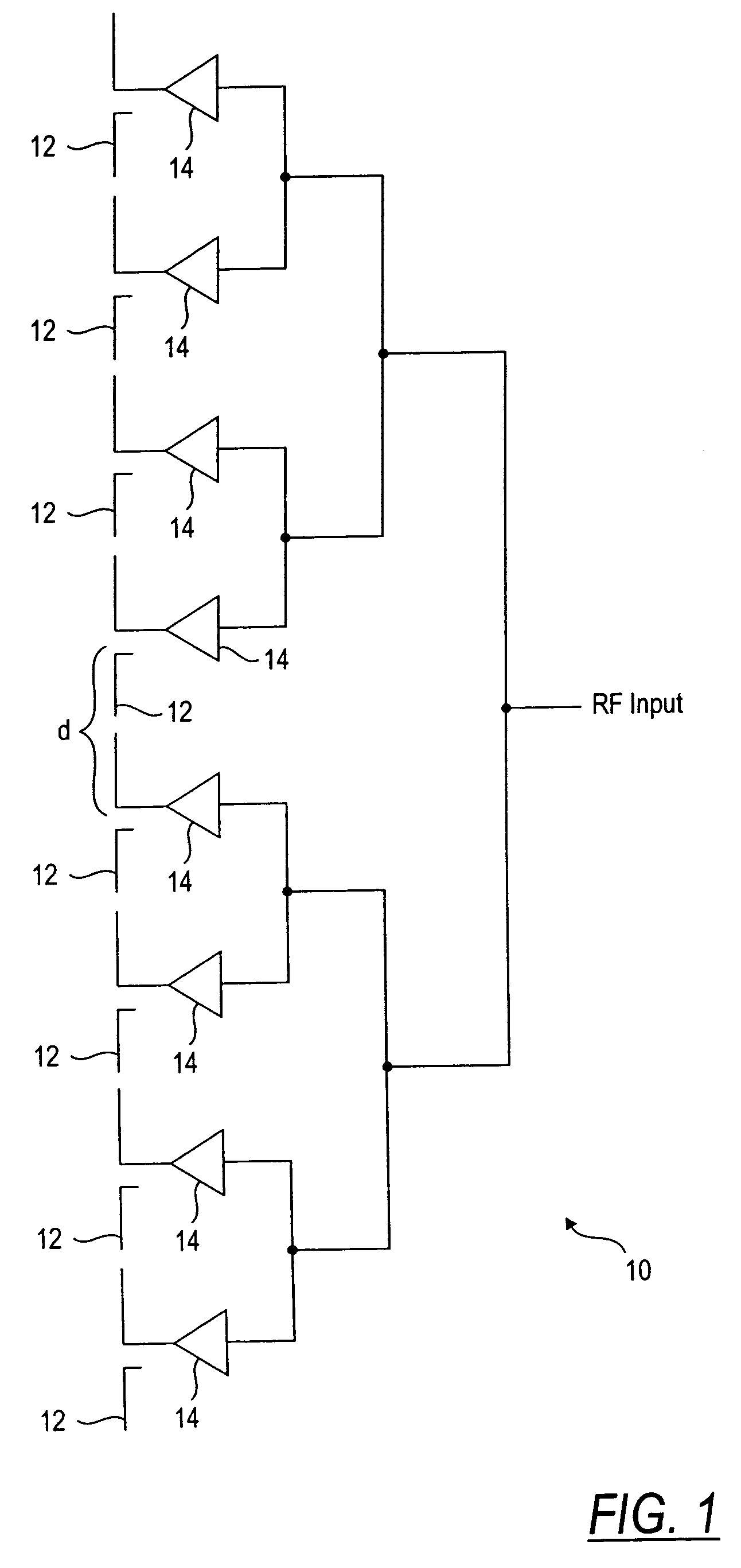Antenna structure and installation
a technology of antenna structure and installation, which is applied in the direction of antenna details, antennas, electrical equipment, etc., can solve the problems of increasing the cost of the foregoing typical cost per unit or cost per watt, increasing the cost of conventional power amplification systems of this type generally require considerable additional circuitry, and half of the power consumed in cable loss/heat, etc., to achieve low cost, low power and linear region low cost
- Summary
- Abstract
- Description
- Claims
- Application Information
AI Technical Summary
Benefits of technology
Problems solved by technology
Method used
Image
Examples
Embodiment Construction
[0020]Referring now to the drawings, and initially to FIGS. 1 and 2, there are shown two examples of a multiple antenna element antenna array 10, 10a in accordance with the invention. The antenna array 10, 10a of FIGS. 1 and 2 differ in the configuration of the feed structure utilized, FIG. 1 illustrating a parallel corporate feed structure and FIG. 2 illustrating a series corporate feed structure. In other respects, the two antenna arrays 10, 10a are substantially identical. Each of the arrays 10, 10a includes a plurality of antenna elements 12, which may comprise monopole, dipole or microstrip / patch antenna elements. Other types of antenna elements may be utilized to form the arrays 10, 10a without departing from the invention.
[0021]In accordance with one aspect of the invention, an amplifier element 14 is operatively coupled to the feed of each antenna element 12 and is mounted in close proximity to the associated antenna element 12. In one embodiment, the amplifier elements 14 a...
PUM
 Login to View More
Login to View More Abstract
Description
Claims
Application Information
 Login to View More
Login to View More - R&D
- Intellectual Property
- Life Sciences
- Materials
- Tech Scout
- Unparalleled Data Quality
- Higher Quality Content
- 60% Fewer Hallucinations
Browse by: Latest US Patents, China's latest patents, Technical Efficacy Thesaurus, Application Domain, Technology Topic, Popular Technical Reports.
© 2025 PatSnap. All rights reserved.Legal|Privacy policy|Modern Slavery Act Transparency Statement|Sitemap|About US| Contact US: help@patsnap.com



